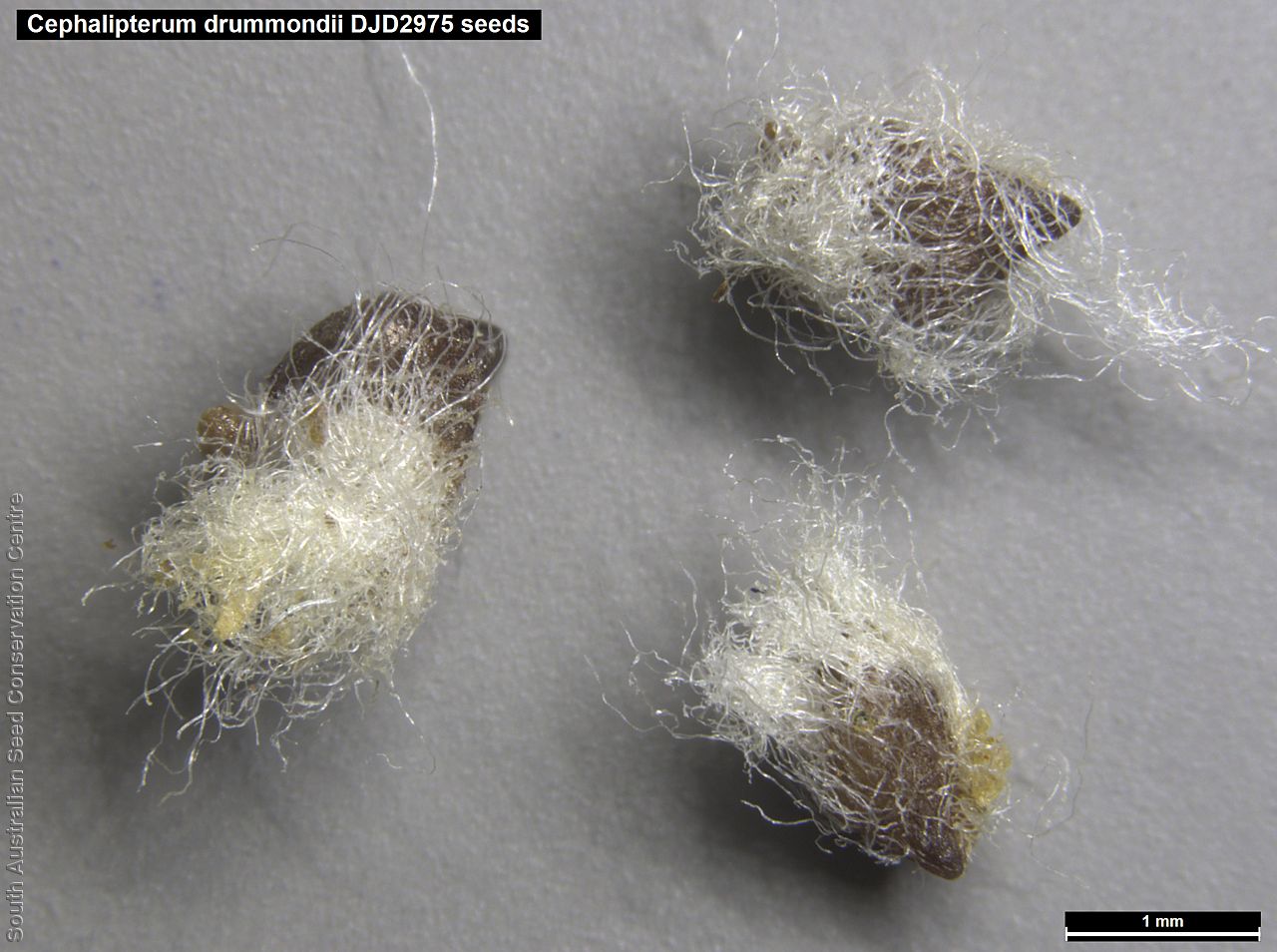











Botanical art
Etymology
Cephalipterum from the Greek 'kephale' meaning head and 'pteron' meaning wing; referring to the conspicuous bract laminae surrounding each flower head. Drummondii named after James Drummond (1786-1863), a Scottish born botanist and naturalist who was the curator of the government gardens in Cork, Ireland and an early settler in Western Australia.
Distribution and status
Found in the western half of South Australia, growing in shrubland and woodland on sandy and calcareous soils. Also found in Western Australia. Native. Common in South Australia. Common in Western Australia.
Herbarium regions: North Western, Nullarbor, Gairdner-Torrens
NRM region: Alinytjara Wilurara
AVH map: SA distribution map (external link)
Plant description
Annual herb to 30 cm high with erect or ascending stems, unbranched above the base; pale-brown with sparse cobwebby hairs. Basal leaves narrowly oblanceolate, attenuate at the base, obtuse to acute, to 40 cm long and 3 mm wide; dark-green and sparsely pubescent with crisped hairs on both surfaces. Stem leaves very narrowly elliptic to linear, acute, to 40 mm long and 1.5 mm wide decreasing in size up the stem. Flower heads in globular clusters with white or tinged pink daisy flowers at tip of each stem. Flowering between July and September. Fruits are creamy-white fluffy daisy head. Seeds are dark brown ovoid seed to 1.7 mm long and 1 mm wide, covered in long dense white hairs. Seed embryo type is spatulate.
Seed collection and propagation
Collect seeds between September and November. Collect whole heads that are drying off and fluffy or collect just the seeds by plucking it off with your fingers. Mature seeds are easily removed. Place the heads in a tray for a week to dry. Then pluck the seeds from the head with your finders. Viable seeds will be fat and brown. Store the seeds with a desiccant such as dried silica beads or dry rice, in an air tight container in a cool and dry place. Seeds are non-dormant, viable seed should germinate readily.